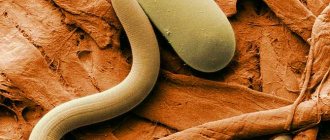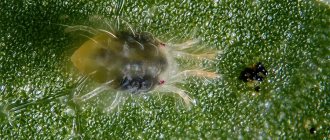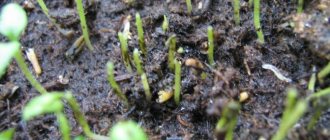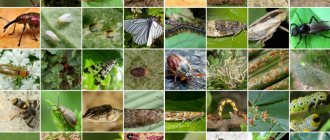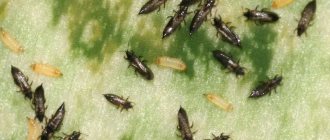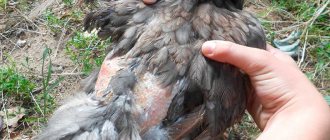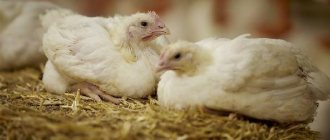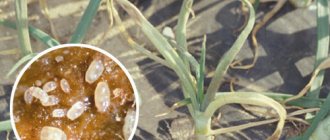Not only adults and children love raspberries. Various insects are also not averse to feasting on it. The greatest danger among them is the raspberry beetle. In everyday life it is often called raspberry. Pest settlements in the bushes can lead to the most unpleasant consequences. The plant begins to wither, the beetle larvae make the berries unsuitable for consumption and sale, and significantly reduce the yield. Preventive measures and the right strategy for exterminating raspberry beetles will help get rid of them once and for all.
Detailed description and photo of the pest
The raspberry beetle is a typical representative of the raspberry family from the order Coleoptera. In accordance with its name, it chooses plantings of garden, ornamental raspberries and blackberries as its habitat. Sources of additional nutrition can be currants, gooseberries, cherries, thorn bushes, pears, and rowan.
Appearance
How to recognize a pest:
- the raspberry beetle is characterized by an oblong oval body, its length ranges from 3.5 to 4.5 mm;
- the color is predominantly dark gray, with red-colored individuals being less common;
- the body is densely covered with hairs of the same color;
- along the edges of the pronotum and abdomen the color is more saturated, most often it is reddish;
- brown or yellow club-shaped antennae and serrated claws.
The eggs are tiny in size, not exceeding 1 mm, capsule-shaped, yellow or white.
The worm-like larva of the raspberry beetle boasts 3 pairs of movable legs, a yellowish color and sparse fibers on the body. Each segment is decorated with dark spots. The maximum length of a young individual is 6.5 mm.
On a note! A characteristic feature of the larvae is the presence of two hook-shaped spines on the last segment of the body, which are curved upward.
Features of life
Adults and larvae spend the winter in the surface layers of the soil at a depth of 5-20 cm under or near raspberry bushes. With the arrival of spring, when the earth warms up to +13°C, they leave their shelters and climb to the surface. Typically, the time of awakening from hibernation occurs in the last ten days of April or the first days of May.
Hungry raspberry beetles begin to actively replenish their supply of nutrients. They feed on weeds and flower nectar. Direct colonization of berry bushes occurs before flowering. Insects eat young leaves, and when flowers and buds appear, they focus all their attention on them. The beetles bite into the buds and eat away the nectaries, leaving the sepals intact.
Interesting! Raspberries have extraordinary flying abilities. They can travel considerable distances in search of flowering plants.
Life cycle
Raspberry beetle.
Initially, forest raspberries become the source of infection. Bugs appear where plantings are overly thickened. In the absence of raspberries, the bugs eat bird cherry, blueberries and cloudberries.
In spring, at temperatures of +12 degrees and above, pests become more active. They eat greens to restore their strength. They actively mate and lay eggs in the buds. When the ovaries appear, the caterpillars are also selected.
For a month and a half, they eat berries, actively working with their jaws. After harvesting, the caterpillars choose a place in the raspberry roots and spend the winter there. They pupate at the beginning of the warm season.
How raspberry beetles reproduce
The mating season begins in mid-May. Fertilized females begin laying eggs. The female individual lays embryos in portions, no more than 2 pieces per flower. In total, 25-40 eggs are formed in the female’s body. At the end of June, beginning of July, adults die. The total lifespan of an adult raspberry beetle is 10-11 months.
The egg stage, under favorable conditions, lasts from 8 days to two weeks. The hatched larvae remain on the surface of young fruits for some time. Having adapted to the environment, they penetrate the ovary and eat away the receptacle and drupes. The raspberry beetle larvae phase lasts 1.5 months. All this time it is in the berry, capturing the stage of fruit ripening.
The larva leaves the food supply on its own only before pupation. It crawls out of the berry, falls to the ground, and here burrows into the soil to a depth of 5-20 cm, sets up a cradle and prepares for the final stage of pupation.
The pupae are white, 4 mm in length. Some of them go into a state of diapause and pupate next year. Others complete their development - in August and September, young beetles appear and remain to overwinter in the soil. If some brave souls decide to come to the surface immediately after pupation, the first frosts kill them.
Interesting! Diapause helps the population survive even with the complete absence of fruits in lean years. The number of diapasing larvae varies from 20 to 80%.
Disease Prevention
You will not have to deal with the described pests if timely prevention of raspberries is carried out. The optimal season for preventive treatment is mid-April. The buds on the bush are still closed, but the circulation of juices is already proceeding in spring mode.
Many gardeners recommend dousing raspberries with boiling water after winter; this kills the larvae of many insects and repels them. Irrigation and watering of the soil near the trunks is carried out with copper sulfate (3% solution) or Bordeaux mixture. Boric acid and potassium permanganate have an antibacterial effect and cause the death of pest larvae.
In addition to using solutions, dry and lifeless raspberry branches should be cut off immediately, as pests like to settle in them. Onions or garlic are planted near raspberries. These crops repel insects because they have a pungent odor.
If you constantly monitor the development of the bush and pay attention to it from time to time, the raspberries will never become infected with pests. Even if infection occurs, it will be eradicated at a very early stage, so there will be no harm to the berries or the bush itself
In growing raspberries, it is of great importance to carry out pest prevention and monitor the condition of the crop.
Harm from raspberry beetles
After wintering, insects use quince, pear, and apple trees as a source of additional food and eat away the internal parts of flowers. On gooseberry and currant bushes, the buds are damaged. Their presence can be determined by small holes with jagged edges.
On berry bushes, adult raspberries damage buds, flowers, and young foliage, which leads to a decrease in yield. The larvae eat up the drupes, the berries begin to dry out at the base of the stalk, in which the pest's passages are clearly visible.
Affected fruits become deformed, lose their presentation, taste and quality. Most often, they can no longer be eaten.
Berries that are not too damaged can be saved by immersing them in lightly salted water for 30-40 minutes. During this time, the larvae will float to the surface, and the fruits can be used to make confitures and jam.
Spider mites on raspberries
Spider mites cause great harm to raspberry bushes. This pest multiplies quickly, especially in dry times. Raspberry plantings that are too thick are at greatest risk. The fact that plants are infected with spider mites is eloquently indicated by yellowed and quickly falling leaves. It is in them that ticks spend the winter, and in the spring they continue their “activities”.
To get rid of spider mites, you need to:
- Collect and burn foliage affected by the pest.
- Immediately after harvesting, treat the bushes with Acrex.
- In early spring, spray raspberry bushes with urea.
For those who have a high mite infestation of raspberries and who are concerned about the question of how to spray raspberries against pests, we can recommend the effective drug Fufanon. As practice shows, in most cases, only one treatment with this product is required to get rid of pests.
Pest control methods
The fight against raspberry beetles involves a complex of agrotechnical measures and preventive measures. In cases of severe infestation, heavy artillery is used - insecticides. If the work is carried out in a timely manner, the prognosis is positive and the bushes can be cleared of pest invasion.
Detailed instructions on how to deal with raspberry beetles:
- In early spring and late autumn it is necessary to dig the soil deeply. In this way it is possible to significantly reduce the number of pupae. In spring, a thick layer of mulching is recommended to prevent insects from leaving the soil after wintering.
- Before flowering, during the period of migration of raspberry beetles, you should lay a tarpaulin or any other cloth on the bushes, and gently shake the plants. Destroy fallen insects. The procedure is recommended to be carried out in the morning, when the air temperature does not exceed 15°C. Under such conditions, the beetles are apathetic and inactive.
- Remove excess branches in a timely manner, cut off dried tops and branches, and thin out. This will ensure better air circulation.
- Do not plant raspberry trees near apple and pear plantations, which pests use as additional food, and also regularly remove weeds from the area.
- Before flowering, you can cover the bushes with gauze or agrofibre. The process is very tedious and time-consuming, but it will avoid a massive invasion of raspberry beetles.
- It is recommended to periodically feed the seedlings with ash and organic fertilizers.
- To disrupt the food connection between plants and raspberry beetles, remontant raspberries are planted, which bear fruit twice a year.
Application of insecticides
The use of chemicals is advisable when 3-4 larvae or adults are found on the bush. In addition, timely spraying will prevent the appearance of pests such as weevils and leaf rollers.
Important! To obtain the desired effect, irrigation with insecticidal preparations is carried out twice during the budding period: before flowering and after. It is strictly forbidden to spray the bushes during the flowering period.
Preparations for the destruction of raspberry beetles:
- Iskra product in tablets. One tablet dissolves in 10 liters of water.
- If the number of beetles is small, the plants are treated with a solution of Karbofos, at the rate of 90 g per 10 liters of water.
- Emulsions “Kinmiks”, “Confidor”. The working solution is prepared according to the instructions. 15 liters is enough to process 10 young raspberry bushes.
- Biological products “Guapsin” and “Bitoxibacillin” are distinguished by their high destructive ability, destroying up to 90% of larvae. And also, thanks to the content of bacteria, they accelerate the dissolution of soil fractions, thereby providing better nutrition for plants.
The list of products is supplemented by Fufanon, Inta-vir, Actellik, Fosbecid. It is important not to forget that when working with chemicals you should wear a respirator, protective suit, and gloves.
Folk recipes
There are also folk ways to combat the raspberry beetle. The most effective recipes:
- In early spring, when the soil is free of snow, the ground is treated with a weak solution of potassium permanganate. For 1 g 20 liters of water.
- Before flowering, spray the bushes with mustard solution. To prepare it, mix 100 g of mustard with hot water. You should have a creamy consistency without lumps. The finished mixture is brought to a volume of 10 liters.
- To treat the bushes, prepare an infusion of tansy from 700 g of the plant and ten liters of water. Let sit for 24 hours, then bring to a boil and simmer for 30 minutes. The finished infusion is cooled, filtered and water is added to make 20 liters of infusion. Tobacco decoction is prepared using the same principle: take 10 liters of water for 300 g of shag.
- While digging the soil, add wood ash or tobacco dust.
- Before the ovary appears, the bushes are sprayed with a soda solution. One tablespoon of soda is dissolved in 10 liters of water.
- To attract ground beetles, garlic and onions are planted near the raspberry tree.
Most of the remedies mentioned act not only on the raspberry beetle, but also on a wide group of other pests.
Processing raspberries as a means of preventing worms in berries
The worm spoils ripe raspberries. To protect raspberry bushes from worms, it is necessary to carry out preventive measures. A way to treat raspberries in the spring against worms:
- In early spring, the bushes are watered with hot water (80 degrees). It is recommended to douse bushes and soil;
- In the fall, the area with raspberries must be dug up, the remaining weeds must be removed, and the soil must be mulched. Humus, peat, sawdust, and compost are used as mulching materials. Worms living on the soil surface cannot get out from under the mulch layer;
- During the flowering period, worms can be collected by hand. The surest way to quickly remove worms from raspberries and clean all the bushes is to spread the film on the ground and shake the raspberry bushes. Carefully collect and burn fallen worms;
- A popular way to treat raspberries for worms in the berries: the bushes are sprayed with a soda solution (10 g soda plus 5 liters of water) or mustard infusion.
Pests can cause serious damage to a gardener. They can damage raspberry bushes and ruin the harvest
Therefore, it is important to carefully inspect the bushes in spring and summer and promptly destroy them when insects appear. Knowing how to get rid of worms in raspberries, weevils, flies, and bedbugs, you can grow a large harvest of aromatic, delicious berries
Fight: 5 folk methods and 2 drugs
There are different ways to deal with raspberry flies, but it is best to use homemade ones.
Folk remedies are much safer and cheaper than store-bought ones, but they will not help against severe fly infestation. Traditional methods:
| Method 1. Garlic infusion An infusion of garlic, used to spray many plants, repels raspberry flies very well:
| |
| Method 2. Onions Onion tincture will help get rid of small clusters of raspberry flies:
| |
| Method 3. Mustard infusion Mustard powder can be purchased at the grocery store; it will quickly repel small colonies of raspberry flies from the area:
| |
| Method 4. Tansy decoction Tansy decoction has a very pungent odor, so it will easily repel the raspberry fly at the initial stage of infection:
| |
| Method 5. Dandelion tincture. Dandelion infusion will help repel small clusters of flies:
|
Purchased drugs:
When using chemicals, take precautions to avoid poisoning. Work only in a respirator and gloves, do not eat food while spraying, and then be sure to wash your face and hands and rinse your mouth
Photo: boleznisada.ru
| Agravertine or Akarin Agravertine is a biological preparation that will help get rid of raspberry flies without risk. Price: From 28 rubles per package (4 ml) How to use: Prepare a solution at the rate of 5 ml of product per 4 liters of water, and spray the bushes with it. The drug itself can be stored for 2 years, but after dilution with water it should be used immediately. It is better to carry out treatment in dry but warm weather in the evening or early in the morning, so as not to burn the leaves. The higher the temperature outside, the more effective the product will be. | |
| Spark This broad-spectrum product is very effective, but can be dangerous to bees, so use it only as a last resort. Price: From 30 rubles per package. How to use: Dilute the drug tablet in 10 liters of water. Spray with the solution in the morning or evening in dry weather. For better adhesion, you can add 10–15 g of grated soap. The harvest can be harvested no earlier than 20 days after treatment |
Stem gall midge
Gall midge is the formation of new growths on young shoots. The growth is parasitized by small organisms that poison the shoot and lead to its death. The larvae themselves are almost invisible to the naked eye, their size is only 1-2 millimeters. In spring, the growth cracks, and small mosquitoes form from it, which continue laying eggs on neighboring branches. Insects tolerate winter well and do not die out. The defeat of gall midges in the initial stages may be invisible, but with the onset of August the growths already become visible.
The only sure way to combat the parasite is to trim the visible growth. The entire growth is cut off from the shoot, and the cut site is filled with garden varnish. Instead of pitch, you can use hydrogen peroxide, clay, or oil paint. Even the affected shoot, from which the growth has been cut, continues to grow and bear fruit. Stem gall midge is not considered a dangerous disease; it is easily cured and does not cause consequences.
How to spray raspberries in the spring against pests of motley fillies?
Before spraying raspberries against pests in the spring, you need to clarify that the variegated grasshopper Jassus mixtus F. is a small insect 6.5-7.5 mm long, with a wide pronotum and tetrahedral hind tibia densely planted with spines. The crown is rectangular, light yellow, rounded, in front with 6 points located transversely, behind them there are 4 or 2 more points. The forewings are brownish-yellow with many milky-white cross-veins and brownish-yellow merging spots and bands. It feeds on the sap of herbaceous plants and is often found on shrubs, including raspberries.
Control measures. Preventive spraying during leaf growth and immediately after flowering with one of the preparations: fufanon, kemifos, actellik, kinmiks, spark, Inta-Vir, actara, fitoverm. When choosing what to spray raspberries against pests, you need to take into account the potential risk to human health.
